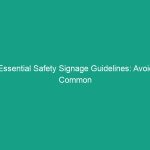Introduction
Offshore drilling operations play a pivotal role in the global energy landscape, providing essential resources that power our economies and lifestyles. However, the complexity and inherent risks associated with these operations necessitate a stringent focus on health, safety, and environmental (HSE) standards. The importance of Safety in Offshore Drilling Operations cannot be overstated; it is not just a regulatory requirement, but a moral imperative that safeguards the lives of workers and protects the Environment from potential disasters.
This article aims to explore the various aspects of Safety in offshore drilling, including regulatory frameworks, best practices, and the challenges faced by the industry. By understanding these elements, operators can better prepare their teams and systems to mitigate risks and enhance Safety performance.
Regulatory Frameworks
Regulatory frameworks form the backbone of safety protocols in offshore drilling operations. Various international and national Regulations are designed to ensure that companies adhere to high safety Standards. Key regulatory bodies include the International Maritime Organization (IMO), the Occupational Safety and Health Administration (OSHA), and the Environmental Protection Agency (EPA) in the United States, along with numerous other international entities.
International Regulations
International regulations such as the International Convention on Standards of Training, Certification and Watchkeeping for Seafarers (STCW) stipulate the necessary training and certification for personnel involved in offshore operations. These standards ensure that workers are equipped with the skills and knowledge required to perform their duties safely.
National Regulations
Each country may have specific regulations applicable to offshore drilling activities. For example, in the U.S., the Bureau of Safety and Environmental Enforcement (BSEE) oversees safety and environmental regulations for offshore oil and gas operations. Understanding and complying with these regulations is crucial for operators to avoid fines, legal liabilities, and, most importantly, accidents.
Compliance and Enforcement
Compliance with these regulations is not merely a checkbox exercise; it requires ongoing commitment and resources from organizations. Regular audits, inspections, and employee training are integral to maintaining compliance and fostering a culture of safety. Non-compliance can lead to severe consequences including hefty fines and operational shutdowns, but more critically, it can result in catastrophic accidents that endanger lives.
Best Practices for Safety in Offshore Drilling Operations
Implementing Best Practices is essential to achieving high safety standards in offshore drilling operations. These practices encompass a wide range of activities from risk assessment to emergency response planning.
Risk Assessment and Management
Conducting thorough risk assessments is the first step in identifying potential Hazards associated with offshore drilling. This process involves evaluating the likelihood and impact of various risks, such as equipment failure, human error, and environmental threats. By prioritizing these risks, organizations can develop effective mitigation strategies that are tailored to their specific operations.
Safety Training and Awareness
Continuous training and awareness programs are fundamental components of safety in offshore drilling operations. All personnel, from rig workers to management, should receive regular training on safety protocols, emergency Procedures, and the use of Personal Protective Equipment (PPE). This training not only equips workers with necessary skills but also fosters a culture of safety that permeates the entire organization.
Incident Reporting and Investigation
Establishing a robust incident reporting and investigation system is critical for learning from mistakes and preventing future occurrences. Encouraging employees to report near misses and incidents without fear of retribution can provide invaluable insights into safety performance. Investigations should be thorough and transparent, with findings communicated across the organization to enhance learning and improve practices.
Regular Maintenance and Inspections
Regular maintenance and inspections of equipment are vital to ensuring safety in offshore drilling operations. Implementing a preventive maintenance schedule helps identify potential equipment failures before they occur. Moreover, inspections should be conducted by qualified personnel, and any findings should be addressed promptly to minimize risks.
Case Studies: Learning from Real-World Examples
Examining case studies of both successful and unsuccessful offshore drilling operations can yield valuable lessons for the industry. By analyzing these situations, companies can identify effective Safety Strategies as well as common pitfalls to avoid.
The Deepwater Horizon Incident
The 2010 Deepwater Horizon oil spill is one of the most infamous case studies in offshore drilling safety. This disaster resulted in the loss of 11 lives and caused extensive environmental damage. Investigations revealed that a combination of human error, inadequate Safety Measures, and failure to adhere to regulations contributed to the incident. The lessons learned from this tragedy have since prompted significant changes in regulatory frameworks and safety practices across the industry.
Successful Implementation of Safety Protocols
In contrast, companies that have successfully implemented comprehensive safety protocols have seen tangible Benefits. For instance, a major offshore drilling operator adopted a safety management system that emphasizes proactive risk management and continuous improvement. As a result, they reported a significant reduction in incidents and near misses, demonstrating the effectiveness of their approach.
Lessons Learned
Case studies underscore the importance of learning from both successes and failures. Organizations should regularly review incident reports and case studies to identify trends and areas for improvement. This reflective practice can enhance safety performance and drive innovation in safety protocols.
Challenges in Ensuring Safety in Offshore Drilling Operations
While there are numerous Best Practices and regulations in place, challenges persist in ensuring safety in offshore drilling operations. Understanding these challenges is crucial for developing effective strategies to overcome them.
Human Factors
Human factors remain one of the most significant challenges in offshore drilling safety. Fatigue, stress, and miscommunication can lead to errors that jeopardize safety. Addressing these factors through effective workforce management, including shift rotations and mental health support, is essential for minimizing risks.
Environmental Conditions
Offshore drilling operations are often conducted in harsh environmental conditions, which can pose significant risks to safety. Weather changes, ocean currents, and geological instability can all affect operations. Companies must implement robust contingency plans and ensure that personnel are trained to respond effectively to these unpredictable conditions.
Technological Advancements
While technological advancements have improved safety in offshore drilling operations, they also introduce new risks. For instance, reliance on automated systems can lead to complacency among personnel. It is vital that organizations strike a balance between leveraging technology for safety improvements while maintaining human oversight and engagement.
Future Trends in Offshore Drilling Safety
The landscape of offshore drilling is continually evolving, and so too are the strategies and technologies used to ensure safety. Staying ahead of these trends is essential for operators aiming to enhance safety in offshore drilling operations.
Increased Automation
Automation is expected to play a significant role in the future of offshore drilling safety. Automated systems can improve efficiency and reduce human error, but they must be complemented by thorough training and human oversight to ensure safety. As technology advances, operators will need to continuously adapt their safety protocols to incorporate new tools and systems.
Data Analytics and Predictive Maintenance
Data analytics is increasingly being used to enhance safety in offshore drilling operations. By analyzing data from various sources, operators can identify trends and predict potential equipment failures before they occur. Predictive maintenance strategies can significantly reduce downtime and enhance safety by ensuring that equipment is always in optimal working condition.
Focus on Sustainability
As the industry faces increasing scrutiny regarding environmental impacts, a stronger focus on sustainability will shape safety practices. Operators are expected to adopt more environmentally friendly methods and practices while ensuring the safety of their operations. This shift will require a reevaluation of safety protocols to align with sustainability goals.
Conclusion
Ensuring safety in offshore drilling operations is a complex yet vital endeavor. By understanding and adhering to regulatory frameworks, implementing best practices, and learning from real-world case studies, organizations can significantly enhance their safety performance. While challenges persist, the future holds promising trends that can further improve safety standards in the industry. As we move forward, it is imperative that every stakeholder remains vigilant and committed to fostering a culture of safety. Are you prepared to take the necessary steps to ensure safety in your offshore drilling operations?


